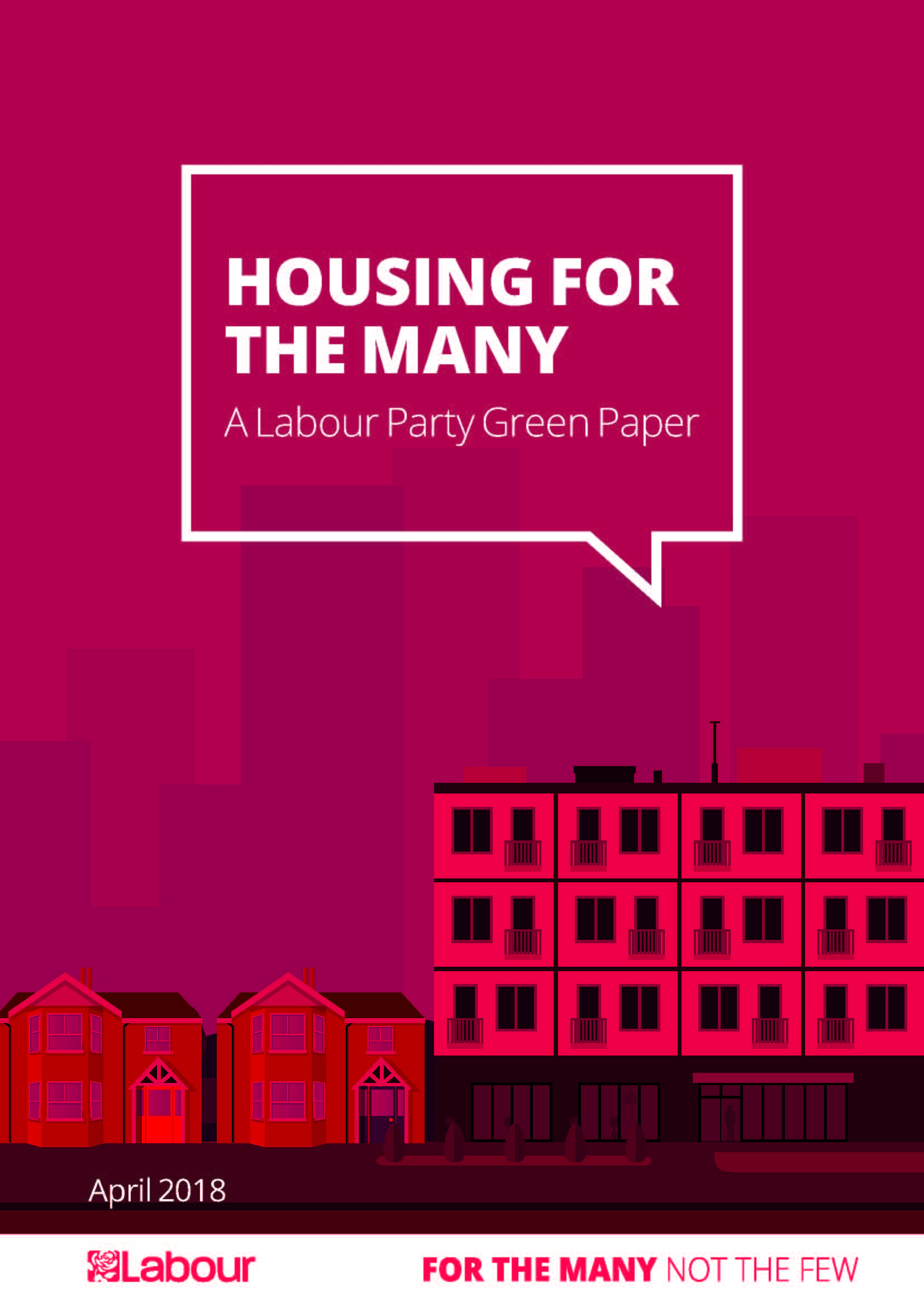Labour’s programme for the next general election needs to be bold and radical but also practical and achievable. There are a number of different estimates of how many affordable homes are needed and of what type. Here we try to unravel the figures and ask – how many council homes should Labour plan to build?
A new group called Labour Campaign for Council Housing aims to ‘radicalise Labour’s housing policy to ensure our party tackles the housing crisis when in government’. Fair enough. It rightly says that there is a crisis of availability of affordable housing, and that Labour’s priority should be to build social rented homes. It wants councils to build ‘at least’ 100,000 of these, with an extra 55,000 contributed by housing associations. It argues for £10 billion grant a year to fund councils to build them, or £100,000 per home.
No one can argue that this isn’t ambitious. The government currently spends less than £2 billion annually on building affordable homes, and few of these are let at social rents. Labour’s green paper, Housing for the Many, promises a programme of 100,000 affordable homes annually of which ‘the majority’ will be for social rent. It would finance this, in part, by raising grant to £4 billion annually, the level achieved by the last Labour Government in its final years. But the new campaign believes this is not enough: ‘these commitments would not meet the scale of ambition needed to solve our housing crisis’.
So they call for 155,000 social rented homes to be built, and expect two-thirds of these to be new council housing. The target comes from a Shelter report published earlier this year, A Vision for Social Housing. However, the report was out of step with other projections of housing need. For example, Crisis and the NHF published a detailed assessment by Glen Bramley showing the annual need for new social rented homes to be 100,000 across Great Britain, with 90,000 needed in England. There are various differences in the ways the two projections were done. Bramley’s assesses a much bigger existing backlog of unmet need, for example. But the main difference is that Shelter assumes that all new needs in the categories it identifies have to be met by building more social housing, whereas Crisis provides a dynamic assessment in which new building influences the whole housing market – as indeed it would in practice – changing the behaviour of landlords and renters as more affordable homes are provided. As might be expected from someone who has been modelling housing needs for years, Bramley’s model gets closer to the real dynamics of the housing market.
Another report calling for a similar level of social rented output came from Capital Economics, written for SHOUT and the National Federation of ALMOs. They argued that building 100,000 social rented homes a year would be justifiable in terms of savings in benefits and the wider effects of the extra construction activity on the economy and on government incomes. Essentially, while Crisis addressed the demographics and affordability, Capital Economics shows the feasibility of the programme. Both, in broad terms, back up Labour’s target.
Let’s have a closer look at the target suggested by the new campaign. For housing associations to contribute 55,000 homes would mean a huge shift away from affordable rent and shared ownership, but at least they have built close to that overall number in the recent past. But in calling for 100,000 new council houses to be built annually the new campaign seems to take little account of councils’ capacity. The last time they built as many as 100,000 homes per year was in the mid-1970s: in fact, you have to add up all the council houses built since 1985 before you get a figure exceeding 100,000, amounting to over 30 years of councils’ output.
Of course, many local authorities are now gearing up to bigger building programmes, taking advantage of the government’s removal of the caps on their borrowing last November. The government believes that within a few years they might build 10,000 units annually, as compared to fewer than 5,000 now. This looks a reasonable assessment, but any progress beyond that depends on overcoming a number of serious constraints. These include access to land, having the skills to run a large new-build programme and being able to finance the extra borrowing involved from rental income. But the biggest constraint is access to grant. Labour’s plan to increase grant to £4 billion annually would help enormously if the money were to be refocussed on social rented homes. Councils could also continue to make use of developer contributions, which already finance nearly half of affordable housing output. Nevertheless Labour’s 100,000 affordable homes target is already an ambitious one, especially if the social rented element is to be close to 90,000 annually.
Now the new campaign argues for a target more than 50% higher, and one which relies much more on councils building than on housing associations. They want to raise the affordable homes budget to £10 billion annually, with grants of £100,000 per unit. The ambition is commendable, but why set a target that many will regard as far too high, and one which bears no relation to the sector’s capacity – especially that of local authorities? Do they really expect an incoming Labour chancellor to set a housing budget which is five times its current level and to be able to spend it from virtually a standing start?
The advantage of the target set in ‘Housing for the Many’ is that it is realistic, costed and grounded in reality: it’s rightly ambitious without being pie in the sky. With strong commitment, it’s capable of being delivered over a five-year period. The new campaign arguing the case for council housing is warmly welcome, but we have to make sure that Labour is able to deliver its current target before we set an even higher one that might be a step too far.


2 replies on “How many council houses should Labour plan to build?”
Reblogged this on Tory Britain!.
While we are in a climate and environmental emergency I have been making the (heroic) assumption that all advocates of new housebuilding would explain how this could be done at any significant scale without overshooting carbon budgets? The UKGBC report at https://www.ukgbc.org/ukgbc-work/net-zero-carbon-buildings-a-framework-definition/ confirms the work on whole life carbon assessment carried out by the RICS, the NHBC and the Committee on Climate Change (the latter claiming that timber building will be scaleable). For the foreseeable future, housing needs will have to be met be a fairer use of the existing housing stock; sub-division, custom-splitting etc)